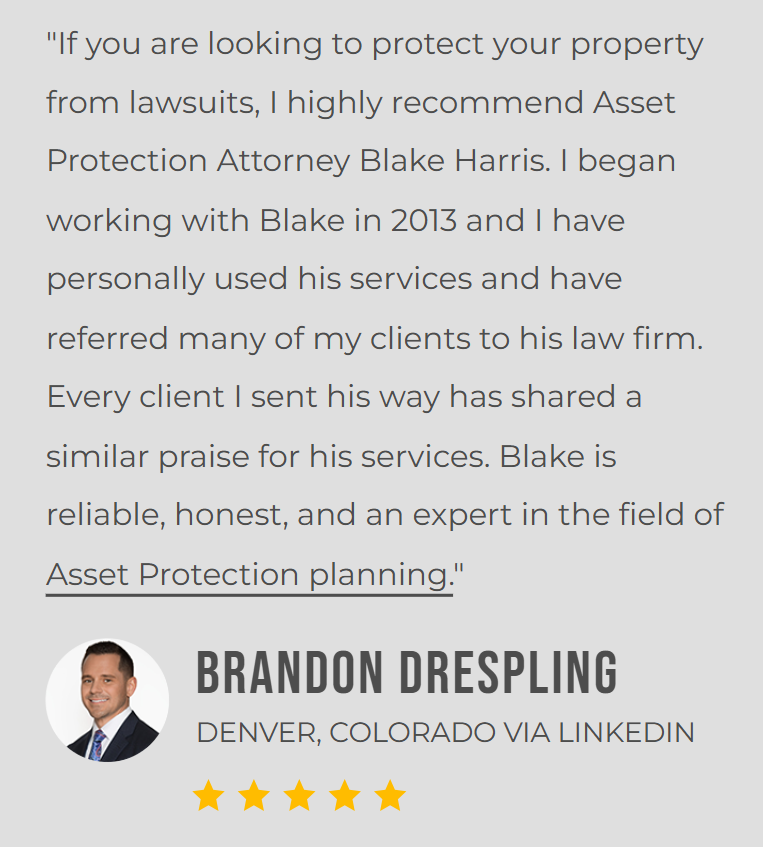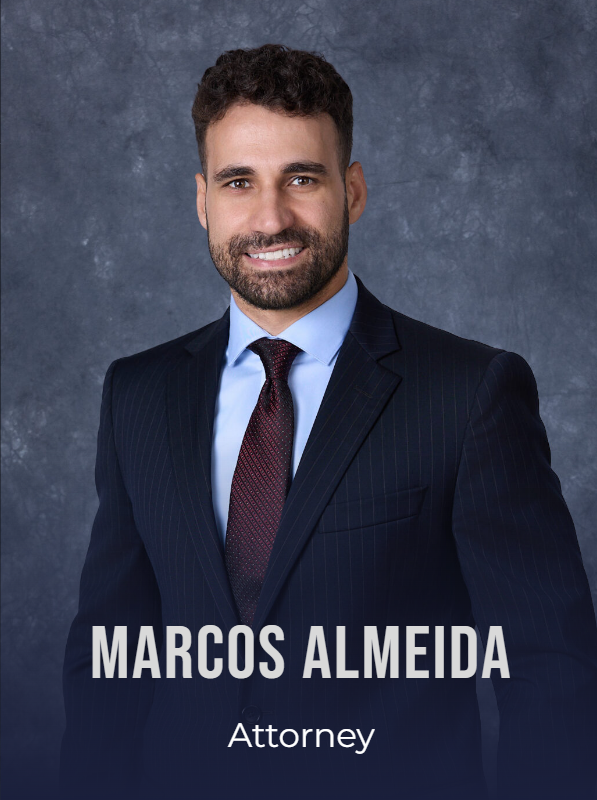Quick Summary
Colorado asset protection laws offer tools to safeguard wealth from lawsuits, creditors, and future claims. In this article, we break down what the laws protect, where they fall short, and how to structure trusts, LLCs, and other legal strategies for maximum impact. Regardless of whether you live in Colorado or hold assets there, understanding these protections is key to preserving your privacy, limiting risk, and staying legally secure.
Looking to Protect Your Assets Under Colorado Law?
Colorado asset protection laws give individuals legal tools to protect assets in advance of potential claims or liabilities. But how well do you know them?
This article breaks down how Colorado law protects assets, what tools are available, and where the limits lie.
Why Listen to Us?
At Blake Harris Law, we stand out for our exclusive focus on offshore asset protection, offering tailored strategies like Cook Islands, Nevis, and Belize trusts. Clients commend our reliability and responsiveness, with many professionals and attorneys referring to their own clients .
What Are Colorado Asset Protection Laws?
Colorado asset protection laws create a legal foundation for safeguarding property from potential claims. These protections apply to homes, retirement accounts, wages, insurance, and more.
It is important to distinguish between self-settled and third-party trusts in Colorado. While self-settled trusts allow you to be a beneficiary of your own trust, their legal protection in Colorado is weak and can be challenged in court.
Additionally, poor structuring such as lack of funding, unclear roles, or insufficient documentation can render even the most carefully selected tools ineffective. Courts may treat such setups as “sham trusts” and ignore them in legal proceedings.
Overall, the state’s legal framework offers foundational protection. However, compared to jurisdictions like Nevada or South Dakota, Colorado’s laws offer more limited options for self-settled trust protection.
Colorado Asset Protection vs. Colorado Homestead Exemption
Colorado asset protection and the Colorado homestead exemption both aim to keep property safe, but they serve different purposes and apply to different types of assets.
Here are the key differences:
- Scope of Protection: The homestead exemption applies only to a primary residence. Broader asset protection strategies can cover business interests, retirement accounts, insurance proceeds, and more.
- Legal Framework: The homestead exemption is a specific law with defined limits—$250,000 in equity, or $350,000 for seniors and disabled individuals. Asset protection combines multiple legal tools, including trusts and LLCs.
- Customization: Asset protection planning is flexible and can be tailored to fit a client’s financial situation. The homestead exemption is automatic but limited in scope.
- Creditor Resistance: Homestead protection works only against unsecured creditors. Asset protection strategies can also help guard against lawsuits, business liabilities, and divorce settlements.
- Level of Protection: The homestead exemption offers limited equity protection. Properly structured asset protection, including offshore trusts in the Cook Islands, Nevis, or Belize, offers stronger, more comprehensive security.
In short, the homestead exemption is a single statutory protection. Comprehensive asset protection requires a multi-layered approach for broader and stronger coverage.
Asset protection should also be viewed within the context of estate planning, ensuring not only immediate defense, but long-term control, tax efficiency, and legacy management.
What Assets Are Protected under Colorado Asset Protection Laws?
Colorado law protects a range of assets from certain creditors and claims. These protections help preserve wealth when structured properly and are best implemented before liability or dispute exists
Below is a summary of the key protected asset types:
- Primary Residence: Up to $250,000 in home equity is protected under the homestead exemption; $350,000 for seniors or disabled individuals.
- Retirement Accounts: IRAs, 401(k)s, and other qualified retirement plans are protected under both federal and Colorado law.
- Life Insurance Proceeds: Death benefits payable to named beneficiaries are generally protected from creditors.
- Annuities: Certain annuity contracts are protected, depending on the structure and the identity of the beneficiary.
- Wages: Up to 75% of disposable income or 30 times the federal minimum wage, whichever is greater is protected from garnishment.
- Public Benefits: Social Security, unemployment, and workers’ compensation benefits are protected under federal and state law.
These protections apply automatically but work best when supported by strategic planning that ensures ownership, titling, and documentation align with legal requirements.
Types of Asset Protection Trusts in Colorado
Colorado offers several trust structures for protecting assets. Below are the primary trust types used in asset protection planning:
- Domestic Asset Protection Trust (DAPT): A self-settled trust that allows you to be both the grantor and a beneficiary. Offers limited protection in Colorado due to weaker statutes compared to offshore jurisdictions.
- Revocable Living Trust: Provides probate avoidance and privacy but does not protect assets from creditors or lawsuits during the grantor’s lifetime.
- Irrevocable Trust: Removes ownership of assets from the grantor, providing stronger protection. Must be carefully drafted to avoid retained control or benefits.
- Offshore Asset Protection Trust: Not governed by Colorado law but often used by residents of Colorado and other U.S. states. Trusts established in the Cook Islands, Nevis, and Belize offer stronger barriers to creditor access.
Using the right trust depends on the asset type, risk profile, and long-term goals.
Benefits of Asset Protection in Colorado
1. Safeguarding Wealth from Litigation Risks
Lawsuits can come from business disputes, personal liability, or divorce. Asset protection planning helps block those threats before they reach your wealth.
In Colorado, certain assets already have built-in protection, such as retirement accounts and home equity under the homestead exemption. But high-net-worth individuals often need stronger tools.
For broader coverage, legal structures reduce exposure. These include:
- Irrevocable Trusts: Remove personal ownership and protect wealth from future claims.
- LLCs: Separate personal and business liabilities and add charging order protection.
- Offshore Trusts: Jurisdictions like the Cook Islands, Nevis, and Belize offer higher thresholds for creditors seeking access to trust assets.
Lawsuit protection is not retroactive. Once litigation starts, your options narrow. Planning early before liability exists is key to building legal barriers that hold.
Asset protection does not make you judgment-proof. But it creates time, leverage, and structure, all of which shift the balance in your favor.
2. Preserving Financial Privacy
Asset protection is not just about defense, it is also about visibility. Keeping ownership details off public records limits unwanted attention and reduces risk.
Colorado tools like revocable living trusts and LLCs allow property to be titled privately. Offshore trusts add an additional layer by removing asset ownership from U.S. jurisdiction.
Privacy strategies include:
- Nominee Services: Keep names off deeds and registrations where permitted.
- Trust Structuring: Use layered planning to distance ownership without losing access.
3. Limiting Creditor Access
Asset protection planning does not erase liabilities, but structures ownership to reduce asset exposure to claims. The goal is to control exposure and increase leverage during disputes.
In Colorado, exemption laws protect certain assets automatically. But high-value assets often require layered tools to be effective under scrutiny.
Strategies include:
- Multi-member LLCs: Offer charging order protection, restricting creditor access to distributions only.
- Irrevocable Trusts: Remove direct ownership and separate control from benefit.
- Jurisdictional Diversification: Offshore trusts in the Cook Islands, Nevis, or Belize offer stronger resistance to U.S. enforcement actions.
How Colorado Asset Protection Works
Step 1: Inventory Assets and Risks
Every protection plan starts with clarity. Before choosing tools, you must know what you own, where it is, and what risks apply.
This process involves ranking threat levels, separating personal assets from business assets, and flagging vulnerable holdings.
Common categories to review include:
- Real estate (primary, rental, commercial)
- Retirement and investment accounts
- Business interests and intellectual property
- Life insurance, annuities, and crypto currencies
- Potential legal exposures (lawsuits, liabilities, divorce)
The right structure depends entirely on what you are protecting.
Step 2: Choose Legal Tools
Once assets and risks are clear, the next step is choosing the right legal instruments. These tools must match both the asset type and the threat profile.
At Blake Harris Law, our attorneys help clients evaluate and deploy structures like domestic and offshore trusts, limited liability companies, and legal exemptions. For instance, Marcos Almeida has 14+ years in international trust planning to guide high-net-worth clients in cross-border asset protection across Cook Islands, Nevis, and beyond.
Common legal tools include:
- Domestic Asset Protection Trusts (DAPTs): Useful for protecting personal assets but weaker under Colorado law.
- Offshore Trusts: Stronger protection in Cook Islands, Nevis, and Belize. Effective against U.S. judgments.
- LLCs and LPs: Separate business assets from personal risk. Multi-member structures offer added creditor protection.
- Exemption Planning: Use state and federal laws to protect retirement accounts, home equity, and insurance proceeds.
Layering tools improves protection. A single strategy rarely covers everything. Proper combinations deliver the strongest results.
Step 3: Structure Ownership Properly
Legal tools alone are not enough. Assets must be retitled or transferred into the selected structures to activate protection. Timing and accuracy are critical.
We work with clients to move assets into offshore trusts, form and fund LLCs, and assign ownership in compliance with laws governing timely and legitimate asset transfers. Proper execution ensures the plan holds under scrutiny.
Key considerations include:
- Funding Trusts: Transferring title to real estate, bank accounts, or crypto assets.
- LLC Structuring: Issuing membership interests, updating operating agreements, and separating personal use from business functions.
- Clear Documentation: Aligning legal ownership with control and benefit, while maintaining full compliance.
Many structures fail because they look good on paper but were never fully implemented. A half-finished plan offers little protection. Execution must be thorough, documented, and legally sound.
Step 4: Ensure Compliance and Documentation
Proper asset protection requires proper records. Courts and creditors examine not just structure, but how it operates. Sloppy paperwork invites challenges.
We assist with trust agreements, LLC operating documents, funding steps, and ongoing compliance to reduce legal exposure and maintain structural integrity.
Key compliance tasks include:
- Maintaining Trust Formalities: Clear roles, trustee communication, and consistent asset handling.
- Corporate Hygiene: Updated filings, separate accounts, and documented decisions for LLCs and partnerships.
- Annual Reviews: Confirm structures match current assets, laws, and risks.
Even strong structures can fail if compliance lapses. The law protects what is properly maintained, not what is casually created.
Step 5: Review and Adjust Over Time
Asset protection is not a set-it-and-forget-it plan.
Laws change. Asset values shift. Life events introduce new risks. What works today may not hold tomorrow.
Annual reviews help ensure every structure still fits its purpose. Trust terms, LLC ownership, and exemption levels must reflect current conditions.
Common triggers for updates include:
- Major asset acquisitions
- Divorce or marriage
- Relocation to a new state
- Changes in state or federal law
Ongoing planning keeps protection durable.
Let Blake Harris Law Protect Your Assets
Colorado asset protection laws give you the tools to safeguard assets, preserve privacy, and limit legal exposure, only if you act early and structure things correctly. For strategies that go beyond state limits, timing and legal guidance make all the difference.
At Blake Harris Law, we focus on asset protection planning, including domestic structures and offshore trusts in the Cook Islands, Nevis, and Belize. Our firm helps clients build tailored plans that hold up under pressure and adapt to changing risks.
Start building your asset protection strategy with our team trusted by clients across the U.S. and beyond.







